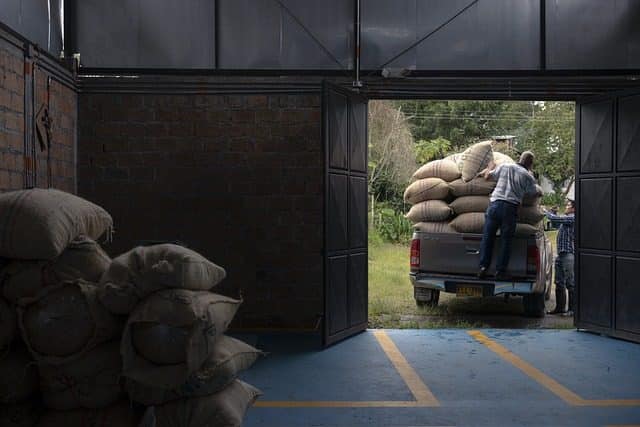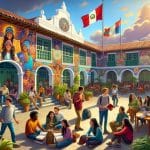Colombia is a vibrant and diverse country located at the northern tip of South America, bordered by both the Caribbean Sea and the Pacific Ocean. Home to around 52 million people, Colombia boasts a rich tapestry of cultural influences, geographical diversity, and a complex historical background that together shape its unique identity. This article delves into various aspects of Colombia, providing a comprehensive overview of its etymology, history, geography, politics, economy, demographics, and culture.
Table of Contents
What is the etymology of Colombia?
The name “Colombia” derives from the last name of Christopher Columbus, the Italian explorer credited with opening up the Americas to European colonization. This name was first proposed in the early 19th century as a way to honor Columbus and his voyages. It reflects Colombia’s historical ties to European powers and its colonial past.
Understanding the etymology of Colombia helps appreciate the complexity of its identity. The term was first used in a proposal to name the newly independent territories of South America. In 1819, the country was established as part of the Gran Colombia, which included present-day Venezuela, Ecuador, and Panama.
Over time, the name became synonymous with the nation itself, representing not just a geographical location but also a cultural and political entity. The adoption of the name also highlights the influence of Spanish language and culture on the region, which remains prevalent today.
What is the history of Colombia?
Colombia’s history is rich and multifaceted, marked by Indigenous heritage, Spanish colonization, and a tumultuous path to independence. Before European arrival, Colombia was home to various Indigenous groups, including the Muisca and the Tayrona, who developed advanced societies with rich cultural practices.
In the 16th century, Spanish conquistadors arrived, leading to the establishment of New Granada, a colony that included present-day Colombia. The colonial period saw the exploitation of resources and the forced conversion of Indigenous peoples to Christianity.
Colombia declared its independence from Spain in 1810, but it took nearly a decade of conflict before achieving it fully in 1819. The country then joined Gran Colombia, which dissolved in 1831, leading to a series of civil wars and struggles for power.
In the 20th century, Colombia faced significant challenges, including political violence and drug trafficking issues. However, since the mid-2000s, the country has made substantial progress in security and economic development, marking a new chapter in its history.
How is the geography of Colombia structured?
Colombia’s geography is exceptionally diverse, featuring a mix of mountains, plains, and coastlines. The country is divided into five main regions: the Andean region, the Caribbean region, the Pacific region, the Orinoquía, and the Amazon rainforest.
The Andean region is characterized by the Andes mountains, which run through the country and are home to many urban centers, including Bogotá, the capital. This area is known for its stunning landscapes and high-altitude ecosystems, which contribute to Colombia’s rich biodiversity.
The Caribbean region boasts beautiful beaches and tropical climates, attracting tourists from around the globe. In contrast, the Pacific region is lush and rainy, known for its biodiversity, including unique flora and fauna. The Orinoquía is a vast plains region that primarily supports agriculture and livestock.
Lastly, the Amazon rainforest covers a significant portion of southern Colombia, offering an array of ecological wonders and Indigenous communities that remain connected to the land. The geographical diversity of Colombia not only shapes its ecosystems but also its cultural expressions and economic activities.
What are the key features of the government and politics in Colombia?
Colombia is a democratic republic, with a political system characterized by a separation of powers among the executive, legislative, and judicial branches. The President serves as both the head of state and government and is elected for a four-year term.
Colombia’s political landscape has been shaped by a history of conflict, including civil wars and the influence of drug trafficking. This has led to ongoing political issues, including corruption and violence, which the government continues to address through various reforms and peace processes.
The Colombian Congress is bicameral, consisting of the Senate and the House of Representatives, which play crucial roles in legislation and governance. Additionally, Colombia has a Constitution that guarantees fundamental rights and freedoms, reflecting its commitment to democratic values.
Despite challenges, Colombia has made significant progress in improving security and stability in recent years. The peace agreement signed in 2016 with the FARC guerrilla group was a pivotal moment, aiming to end decades of conflict and promote reconciliation.
What is the current state of the economy in Colombia?
Colombia’s economy is one of the largest in Latin America, characterized by a mix of agriculture, manufacturing, and services. The country is a major exporter of coffee, flowers, emeralds, and coal, among other products.
Economic growth and challenges in Colombia have been influenced by various factors, including global commodity prices and domestic policies. In recent years, the economy has shown resilience, with steady growth rates despite external challenges.
However, Colombia faces several economic issues, such as income inequality and unemployment. The government has been implementing measures to enhance economic indicators and foster sustainable development, including investments in infrastructure and education.
The COVID-19 pandemic posed significant challenges, causing a temporary economic downturn. Nonetheless, Colombia is on a path to recovery, focusing on reforms and innovation to ensure long-term growth and stability.
How diverse is the demographics of Colombia?
Colombia is known for its rich cultural diversity, influenced by Indigenous, Spanish, and African heritage. This blend is evident in the country’s demographics, which reflect a variety of ethnic groups and traditions.
The majority of the population identifies as mestizo, a mix of Indigenous and European ancestry. However, there are also significant communities of Afro-Colombians and Indigenous peoples, each contributing to Colombia’s cultural fabric.
Demographic diversity in Colombia extends to languages, with Spanish as the official language. However, regional languages and dialects, including various Indigenous languages, are also spoken, showcasing the country’s linguistic richness.
This diversity is celebrated through numerous cultural festivals, music, dance, and culinary traditions. The inclusion of various cultural expressions has become an integral part of Colombia’s identity, making it a vibrant and dynamic nation.
What aspects of culture define Colombia?
Colombia’s culture is a vivid tapestry woven from its historical influences, geographical diversity, and social dynamics. The country is renowned for its music, art, and culinary traditions, which reflect its multicultural identity.
Colombian culture is perhaps best represented through its music genres, such as cumbia and vallenato, which have roots in African, Indigenous, and Spanish traditions. These musical styles are celebrated throughout the country, often accompanied by lively dance.
Art in Colombia is equally diverse, with a rich history of both traditional and contemporary expressions. Renowned artists like Fernando Botero have gained international acclaim for their unique styles, characterized by exaggerated proportions and vibrant colors.
Colombian cuisine is a reflection of its cultural influences, offering a variety of dishes that differ from region to region. Staples like arepas and sancocho highlight the country’s agricultural bounty and culinary creativity, making Colombian food a vital aspect of its cultural identity.
Questions related to Colombia’s culture and society
Is it safe to travel to Colombia now?
Travel safety in Colombia has improved significantly over the past decade, with many regions becoming safe for tourists. However, visitors should remain vigilant and stay informed about local conditions. Major cities like Bogotá, Medellín, and Cartagena are generally safe, especially in tourist areas. It’s advisable to follow travel advisories and stay connected with local news for the latest updates.
How much is $100 US in Colombia?
As of the latest exchange rates, $100 US is approximately 400,000 Colombian pesos. However, exchange rates fluctuate, so it’s advisable to check current rates before traveling. Using local currency for transactions can often provide better deals, especially in markets and smaller shops.
Is Colombia a rich or poor country?
Colombia is classified as a middle-income country, with a diverse economy that has shown resilience and growth. While there are affluent areas, significant income inequality persists, making poverty a challenge in rural regions. The government continues to work on policies to improve living standards for all citizens.
What is Colombia most famous for?
Colombia is famous for several cultural and natural treasures, including its coffee, emeralds, and vibrant music scene. Additionally, the country’s biodiversity is a significant draw for ecotourism. Colombia’s rich history, diverse landscapes, and warm hospitality also contribute to its growing reputation as a travel destination.




